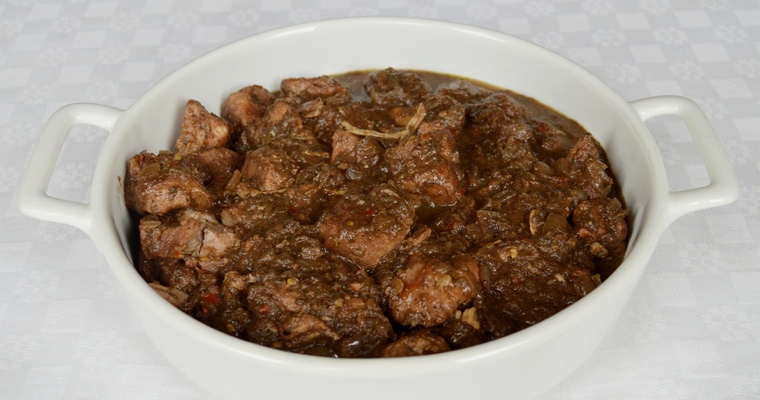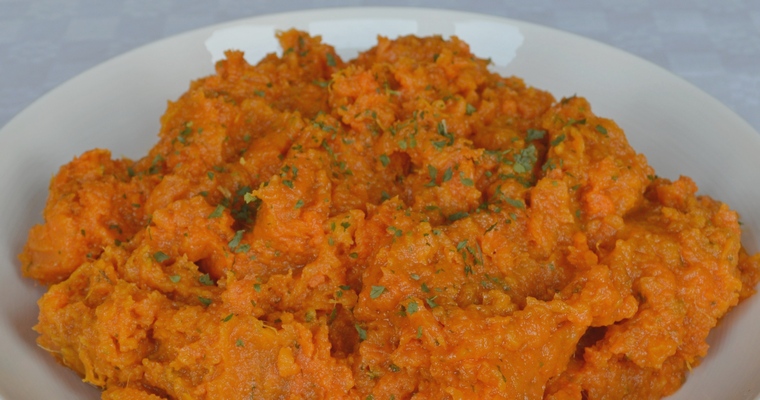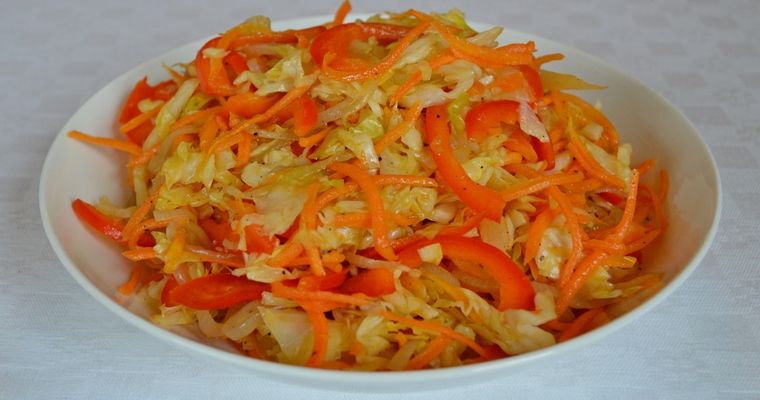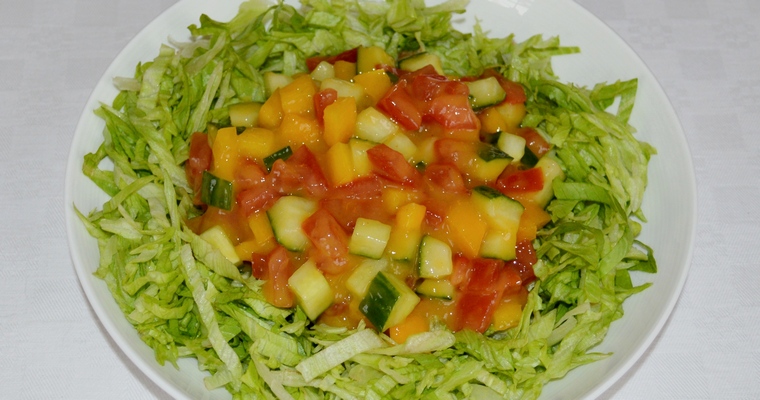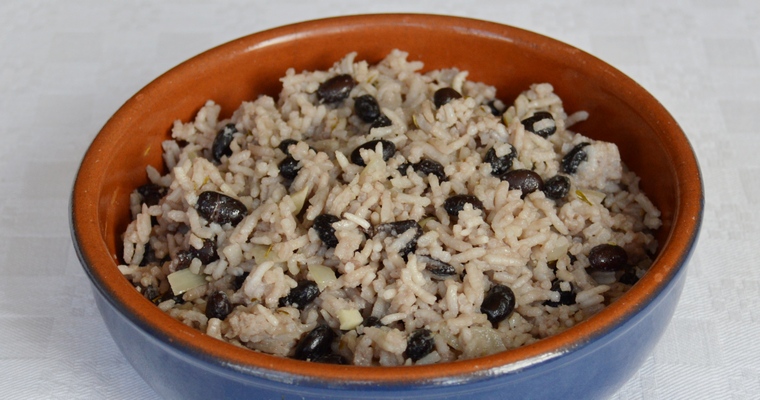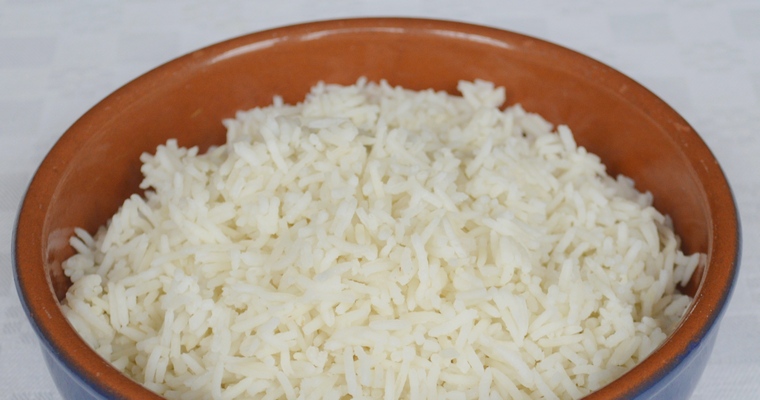Sweet, aromatic spices and fiery heat, this Jamaican stew ticks all the boxes. This Gluten-free and Paleo recipe tingles with fruity scotch bonnet chillis.
In a previous post, I gave my recipe for Jerk Chicken. This recipe uses the same paste, but this time the meat is braised in a cooking liquid rather than served dry. This results in a slightly more mellow and less punchy dish, as the longer cooking time reduces the potency of the chilli. The recipe works equally well with beef. Simply replace the same amount of pork neck fillet with a slow-cooking cut such as beef chuck or shin.
Tips & Tricks
- Fry the meat before braising it – this caramelises meat sugars on the surface, which develops the flavour.
- Heat the pan to sizzling point – this creates an instant seal when the meat is added, preventing it from sticking and keeping the moisture locked in
- Do not overcrowd the pan – this will cause the meat to stew in its own juices rather than brown
- Cover for most of the cooking time – this traps the steam and stops the liquid from evaporating before the meat has finished cooking
- Skim off the oil – a greasy layer of fat is not appetising and dilutes the flavour
- Reduce the cooking liquid – this concentrates the flavour and creates a thick coating that clings to the meat rather than running off and pooling at the bottom of the plate
Ingredients
for the spice paste:
- 1 tablespoon allspice berries
- 2-3 scotch bonnet chillis (depending on how hot you like it!), stalks removed and quartered
- thumb-sized piece of root ginger (20g), peeled and roughly chopped
- 4 garlic cloves, peeled
- 100g spring onions (about 6), ends trimmed and roughly sliced
- 1 tablespoon fresh thyme, leaves only (or 1 teaspoon dried thyme)
- 1 teaspoon ground cinnamon
- 1 teaspoon ground ginger
- 1 teaspoon ground nutmeg
- 1 teaspoon salt
- 1/2 teaspoon freshly ground black pepper
- 2 tablespoons (35g) honey
- 1/4 cup (60ml) orange juice (about 1 small orange)
for the stew:
- 1 kg pork neck fillet, cut into 4cm pieces
- 3 tablespoons cooking oil (I used lard)
- 1 onion (130g), peeled and finely chopped
- 1 1/4 pints (710ml) homemade chicken stock
Instructions
- Make the spice paste. You can make the paste ahead, as it will keep for up to 1 month in the refrigerator. To store, spoon into a jam jar, press down to eliminate air bubbles, and then pour over a layer of neutral-tasting oil.
- Put the allspice berries into a spice grinder and grind until finely ground (if you do not have a spice grinder, then use a pestle and mortar or the small bowl of a food processor). Tip the ground berries into the small bowl of a food processor, and add the remaining ingredients (scotch bonnet chilli, fresh ginger, garlic, spring onion, thyme, cinnamon, ground ginger, nutmeg, salt, pepper, honey and orange juice). Blitz to a smooth paste.
- Brown the pork. Remove the meat from the refrigerator 30 minutes before cooking, so it has time to come up to room temperature.
- Heat the cooking oil in a heavy-based casserole over a medium-high heat. When a few drops of water sizzle and evaporate upon contact with the pan, add the pork. Sear the pork in 3-4 batches until browned all over with a caramelised crust – about 3-4 minutes a batch. Add more cooking oil when necessary. Do not overcrowd the pan. Transfer the browned meat to a bowl.
- Saute the onion. Reduce the heat to medium. Add the onion and fry for about 5 minutes, until translucent but not brown.
- Fry the spice paste. The spices need to be fried in hot oil to develop their flavour, so add more cooking oil if there is not enough in the casserole. Add the spice paste and fry for 2 minutes, stirring frequently.
- Simmer the stew. Add the the stock. Stir until blended, then return the pork to the casserole. The pork should be more-or-less submerged in liquid. Top up with a bit of extra stock / water if this is not the case. Bring to the boil, then reduce the heat to low. Cover, and leave to simmer gently for 1 hour, stirring occasionally. Uncover, and simmer gently for 1 hour more.
- Traditionally, stews are made the day before they are to be eaten. This improves the flavour by allowing the spices to develop and meld together.
- If eating another day: leave to cool overnight in the refrigerator. After several hours chilling, the fat will rise to the top and congeal to form a solid layer on top. When you want to eat the stew, gently scrape off the fat with a metal spoon and discard. Bring to the boil, then follow the instructions below to reduce the sauce.
- if eating straight away: take the pan off the heat, and remove the meat using a slotted spoon. Wait for the oil to separate out and rise to the top. Tilt the pan, then lower in a metal spoon or ladle and scoop up the oil from the sides.
- Reduce the sauce. Remove the pork from the pan using a slotted spoon, and keep warm by covering in a double layer of tin foil. Turn the heat up to high and boil rapidly to reduce the cooking liquid to a thick sauce – about 20-30 minutes. Stir frequently towards the end to stop it from sticking to the bottom of the pan.
- Return the pork to the casserole, and mix until evenly coated in sauce. Transfer into a serving dish and serve hot.

